WASHINGTON FOREST PROTECTION ASSOCIATION
Trees of Washington State
The Pacific Northwest is renowned for its abundance of evergreen trees, making it one of the top regions for evergreen growth in the United States. Evergreens are unique in that they retain their needles throughout the year. Washington’s forests are home to approximately 25 native tree species. Each plant thrives in its ideal environment, much like cacti in the desert and grasses in the plains. In Washington, tall firs and cedars thrive in the cool, moist winters and mild summers. Sustainable forestry practices ensure the growth of various tree types in all four main forest regions throughout their life cycles. Below, we highlight some of the popular tree species you can find in our forests.
Here are seven common trees in Washington's forests
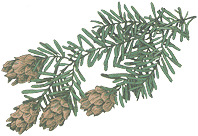
Western Hemlock
Facts about western hemlock
Look For: Short, flat needles with rounded tips and two white lines on the underside. Needles grow on sides of branches forming a flat spray. Cones small, under 1 inch. Thin bark with red inside. Droopy top.
Used For: Lumber, treated lumber, newsprint, paper, and paper products.
Scientific name: Tsuga heterophylla
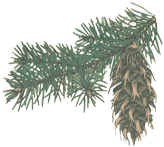
DOUGLAS-FIR
Facts about DOUGLAS-FIR
Look For: Single yellow-green needles, about 1 inch long that encircle the stem and twist at the base with two white bands underneath. Cones up to 4 inches long, with pitchfork-shaped bracts protecting the seeds. Bark deeply furrowed on mature trees. Top erect.
Used For: Mainly lumber, also used for plywood, Christmas trees, paper, and paper products.
Scientific name: Pseudotsuga menziesii
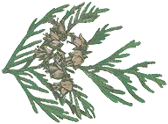
WESTERN RED CEDAR
Facts about Western Red Cedar
Look For: Tiny, flat, sale-like needles that grow in alternating pairs, tightly pressed to the stem forming spray-like branches. Very small cones, under 1 inch long. Stringy bark that can be pulled off in long strips.
Used For: Shakes, shingles, decking, interior and exterior siding and fencing, and wood chips to make medical masks and gowns.
Scientific name: Thuja plicata
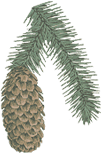
SITKA SPRUCE
Facts about Sitka Spruce
Look For: Sharp, stiff, bluish-green needles 1-inch long needles that encircle the twigs. Pale, slender cones up to 4 inches long. Bark forms plates the size of silver dollars. Most tops have been attacked and killed by the Spruce budworm.
Used For: Lumber, paper, musical instruments, and ladders.
Scientific name: Picea sitchensis
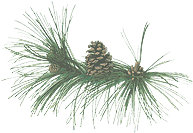
PONDEROSA PINE
Facts about Ponderosa Pine
Look For: Long, needles, 5-10 inches, yellow-green, 3 per bundle. Cones 3-6 inches long, round with sharp tips. Bark of older trees orange-brown, with broad, flat scaly ridges and deep furrows.
Used For: Lumber, decorative molding, furniture wood and pilings.
Scientific name: Pinus ponderosa
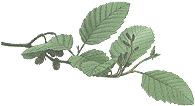
RED ALDER
Facts about Red Alder
Look For: Oval-shaped leaves, 3-6 inches long, shiny green, with serrated edges and pointed tips. Cones small 1 inch. Splotchy gray bark.
Used For: Furniture wood, pallets, cabinets, paneling, paper, and paper products.
Scientific name: Alnus rubra
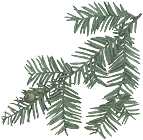
PACIFIC YEW
Facts about Pacific Yew
Look For: Dark-green needles, 1 inch, with pointed ends. Fruit is a single seed surrounded by a scarlet, cup-shaped “berry.” Thin, dark purplish, scaly bark. Small tree that lives in the shade of other trees.
Used For: Archery bows, canoe paddles, cabinetry, furniture, musical instruments, and cancer-fighting drugs.
Scientific name: Taxus brevifolia
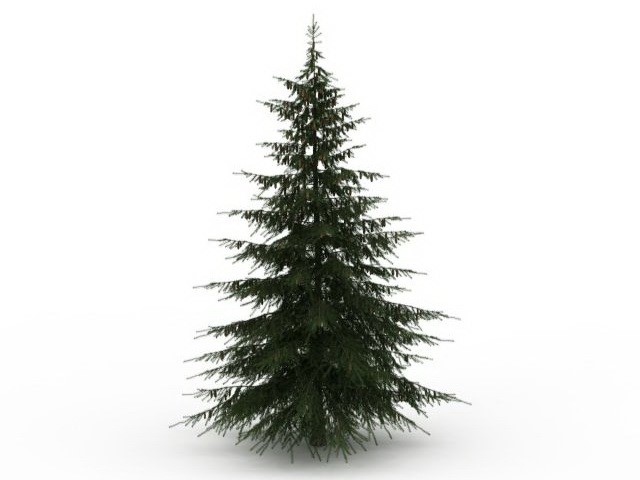
Tree of Choice
Douglas-Fir
It grows so well in all of our forest regions, and because its wood is prized worldwide for its strength and durability, Douglas-fir is often the tree of choice for many Washington forest landowners. The tree’s intolerance of shade means Douglas-fir grows best in open sunlight. That’s why it does so well in land cleared by harvesting, wildfire, or even volcanic eruption.
benefit of trees
learn more about our forests
Learn more about how trees and wood products mitigate climate change.